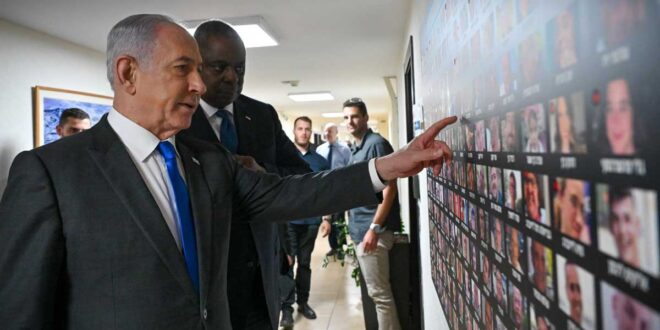After more than 15 months of unremitting bloodshed in Gaza, the Israel-Hamas ceasefire and hostage-release agreement, hammered out under fraught diplomatic conditions, marks an important but tenuous beginning. The agreement entails Israel freeing Palestinian prisoners in return for Hamas’s freeing 33 living hostages under a 42-day truce. However welcome such moments may be for those whose best hope is a longer peace, these events are frequently followed by fears that the deal will not last the military and political forces unleashed in both short terms.
Though ceasefires and prisoner exchanges have sometimes eased regional tensions, the absence of a long-term political framework makes it reasonable to harbor doubts about the prospects of this latest deal. Even the most carefully negotiated agreements have collapsed because in many of the previous truces, each side discovered a pretext to accuse the other of non-compliance. In Gaza, where fighting has ravaged infrastructure and left families struggling for basic necessities, there is immediate hope that a ceasefire will reduce violence and allow humanitarian supplies to flow in. However, despite being welcomed, the ceasefire is inherently fragile because of the distrust between Israel and Hamas.
The suspension of hostilities may give Palestinians a few days’ breathing space from the daily rigors they face. Repeated airstrikes, movement restrictions, and health shortages have almost shattered the social fabric of Gaza, where the most severe humanitarian crisis is caused by restrictive access to resources. The release of Palestinian prisoners may seem like a victory for some, but it remains to be seen if it will ever translate into something meaningful in terms of improvement in people’s lives. No ceasefire could help re-intensify the spirit of hope and in the process be able to signify a return to normalcy that can only be occasioned by an all-necessary overhaul.
Furthermore, the continuation of aggression depends on the effectiveness of the complex terms of the agreement to withstand scrutiny. Apart from offering an opportunity for humanitarian interventions and family reunions, these 42 days are somewhat important because too much pressure is put on the negotiators to facilitate the implementation process. Maintenance of the communication channels may be closely linked to the United States, Qatar, Egypt, and other actors of the region. Whether such a deal simply evaporates once the headlines are no longer as attention-grabbing or if it can be extended to a more long-term situation will likely be determined by their part in monitoring and policing conflicts.
Decision-makers in Israel also do feel the heat at home. In contrast, it is quite clear that a majority of Israelis does not consider the exchange of Israeli hostages for Palestinian prisoners as the deterioration of national security. Conversely, the deal supporters could state in response that this swap saves Israeli lives and provides the chance to rethink a model of operation that depends largely on the threat of force. The public might turn against the ceasefire, making it easier to have an early termination; this is because if some of the political facets in Israel view the agreement as a failure apart from being a diplomatic triumph.
Successive escalations in the Gaza incidents have affected the general population more. Those who survive each cycle of violence see livelihoods changed, houses destroyed, and psychological effects worsened. A lasting cease-fire should be able to unlock the potential of reconstruction programs that have remained on the drawing board for years, but they also depend on decreased tension at the checkpoints and guaranteed supplies in. Not for most Palestinians would this agreement be viewed as anything other than a fleeting comfort in the overwhelmingly unrelenting hardships they have been inflicting into a seemingly never ending timeframe unless of course the Quality of Live Index for most Palestinians has risen considerably.
The result of the ceasefire will depend finally on political will on each side. What began as a 42-day halt in fighting could become an opening for greater dialogue if both Israel and Hamas prove able to absorb provocative acts without violating the agreement’s terms. But history counsels caution: long-cherished antagonisms and sporadic bloodshed can at any moment annihilate the diplomacy of any breakthrough. The results of the deal will not only decide the fate of immediate humanitarian needs but also echo in the overall narrative of peacemaking in one of the most combustible corners on earth.
 Geostrategic Media Political Commentary, Analysis, Security, Defense
Geostrategic Media Political Commentary, Analysis, Security, Defense





